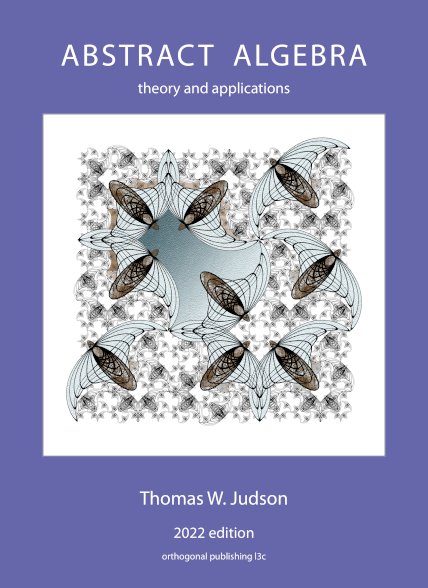Section 23.3 Applications
Subsection Solvability by Radicals
Throughout this section we shall assume that all fields have characteristic zero to ensure that irreducible polynomials do not have multiple roots. The immediate goal of this section is to determine when the roots of a polynomial
The only one of these operations that might demand a larger field is the taking of
such for
The easiest polynomial to solve by radicals is one of the form
We shall prove that a polynomial is solvable by radicals if its Galois group is solvable. Recall that a subnormal series of a group
where
Lemma 23.28.
Let
Proof.
The roots of
Therefore,
Now suppose that
Therefore,
is a normal series. By our previous argument,
is also abelian,
Lemma 23.29.
Proof.
Since
such for
such that
such that
We will now prove the main theorem about solvability by radicals.
Theorem 23.30.
Proof.
Since
Again by the Fundamental Theorem of Galois Theory, we know that
The converse of Theorem 23.30 is also true. For a proof, see any of the references at the end of this chapter.
Subsection Insolvability of the Quintic
We are now in a position to find a fifth-degree polynomial that is not solvable by radicals. We merely need to find a polynomial whose Galois group is
Lemma 23.31.
If
Proof.
Let
Example 23.33.
We will show that
Therefore,
Subsection The Fundamental Theorem of Algebra
It seems fitting that the last theorem that we will state and prove is the Fundamental Theorem of Algebra. This theorem was first proven by Gauss in his doctoral thesis. Prior to Gauss’s proof, mathematicians suspected that there might exist polynomials over the real and complex numbers having no solutions. The Fundamental Theorem of Algebra states that every polynomial over the complex numbers factors into distinct linear factors.
Theorem 23.34. Fundamental Theorem of Algebra.
Proof.
Suppose that
Suppose that
We now know that
Although our proof was strictly algebraic, we were forced to rely on results from calculus. It is necessary to assume the completeness axiom from analysis to show that every polynomial of odd degree has a real root and that every positive real number has a square root. It seems that there is no possible way to avoid this difficulty and formulate a purely algebraic argument. It is somewhat amazing that there are several elegant proofs of the Fundamental Theorem of Algebra that use complex analysis. It is also interesting to note that we can obtain a proof of such an important theorem from two very different fields of mathematics.

